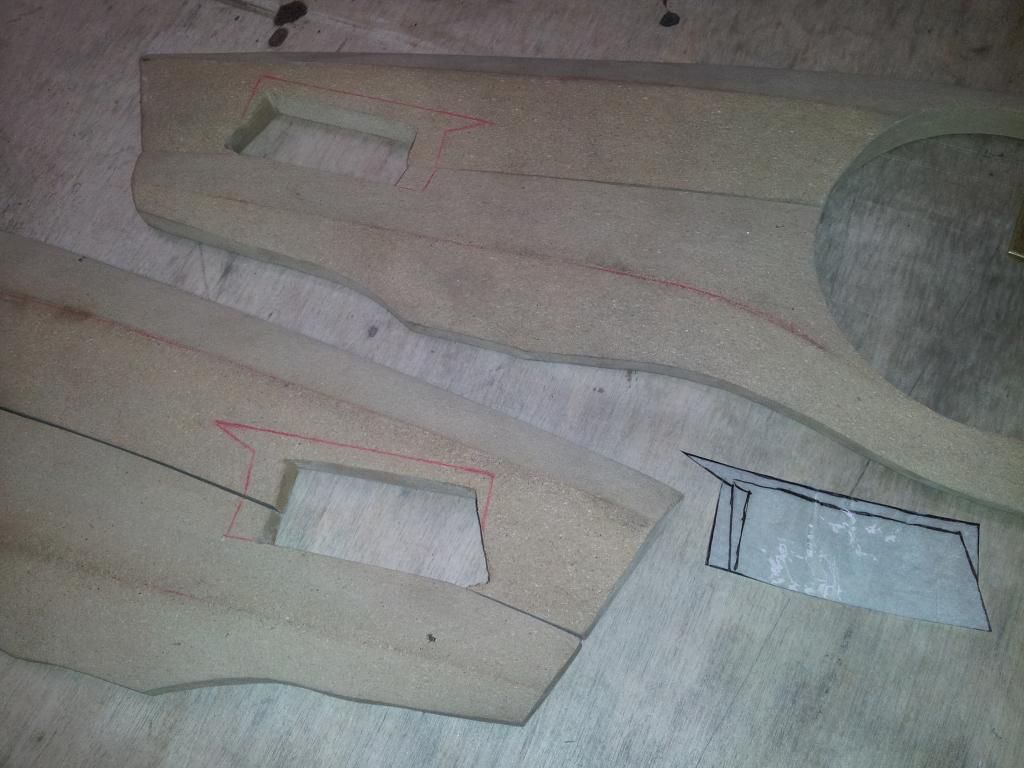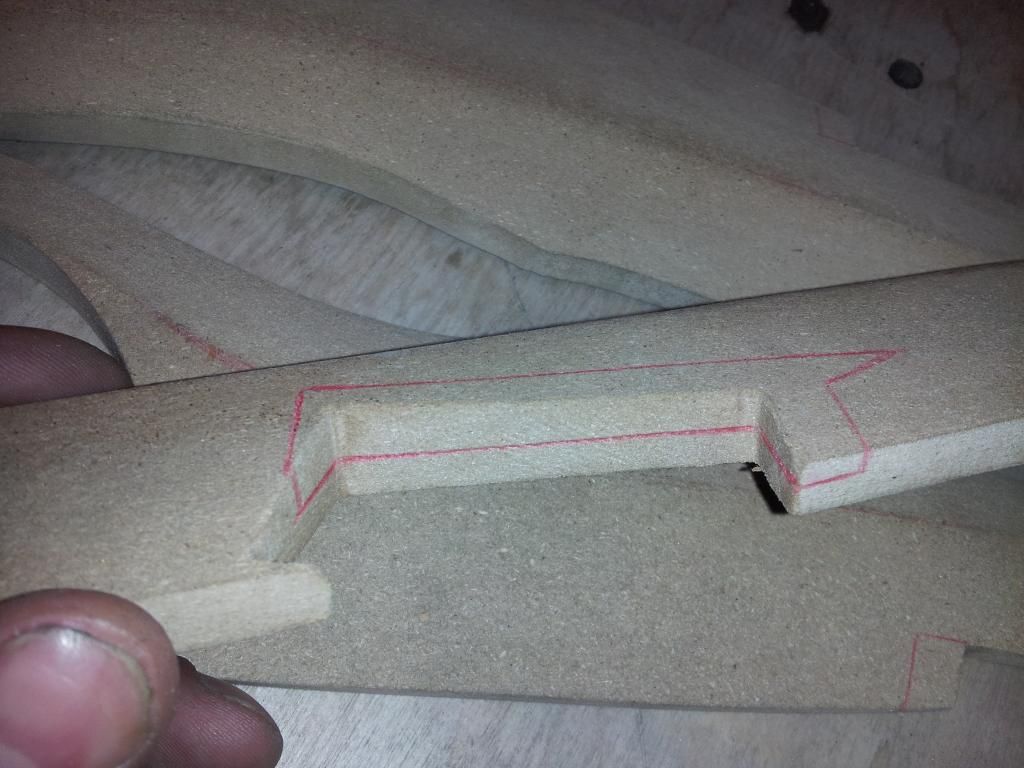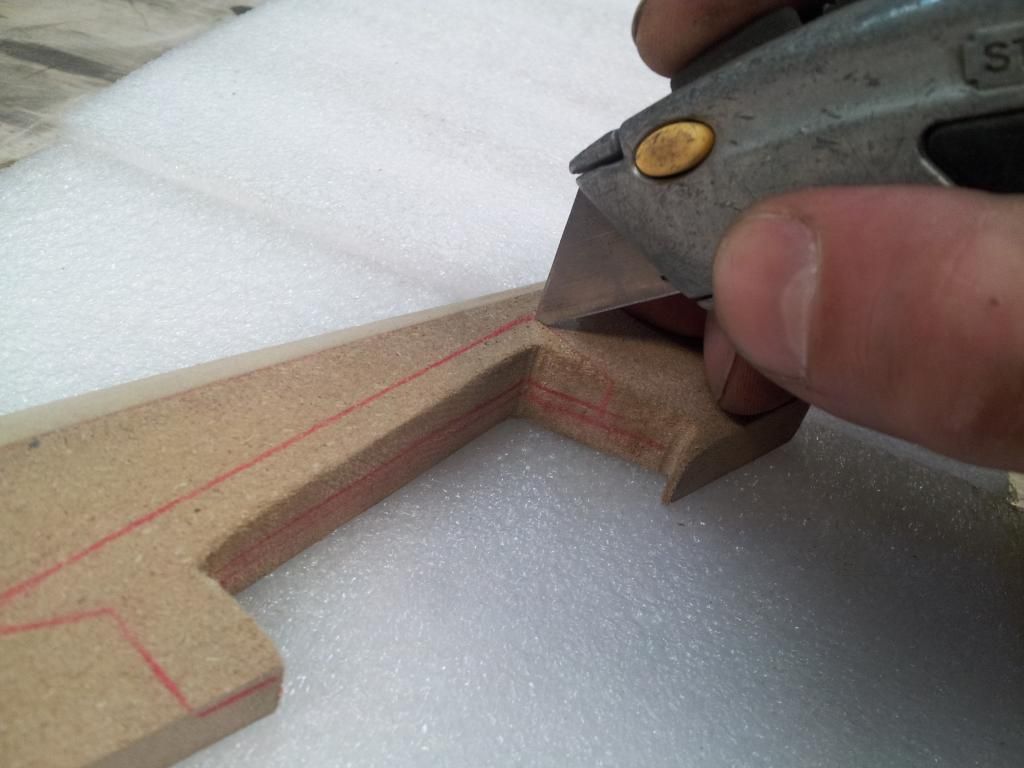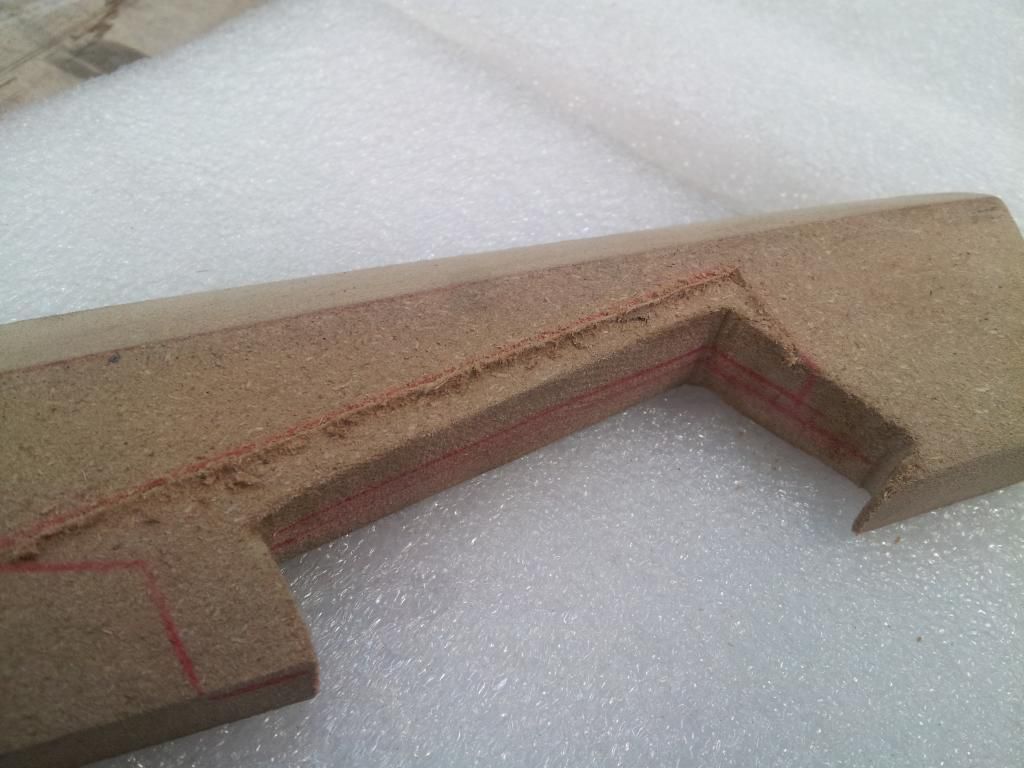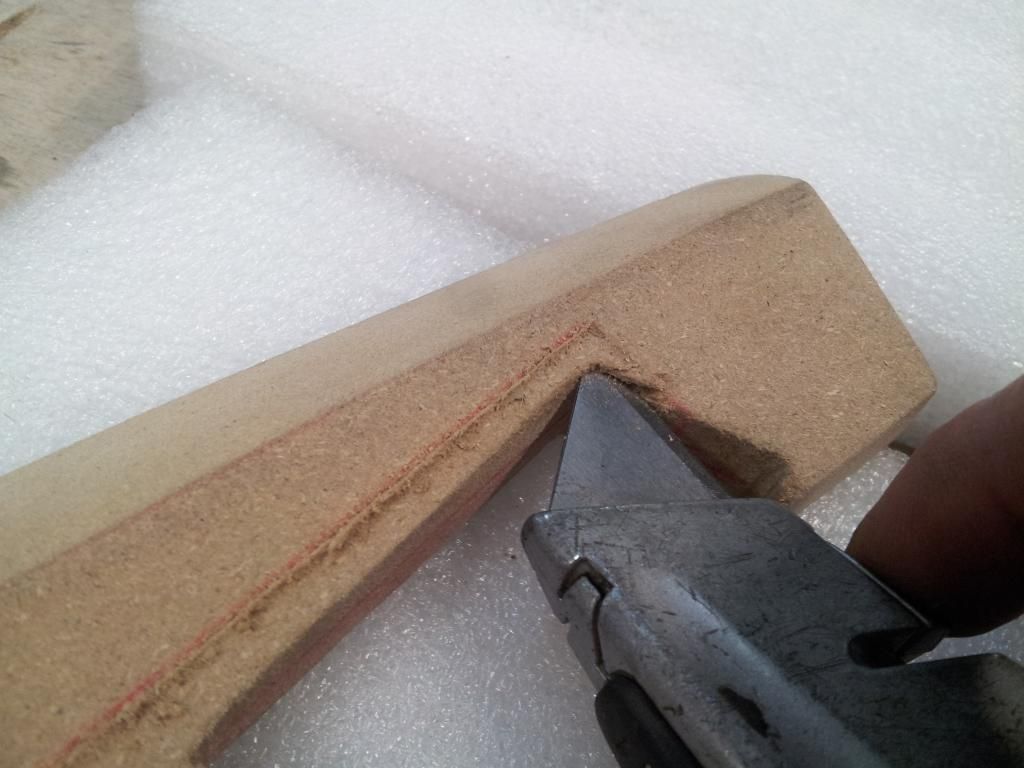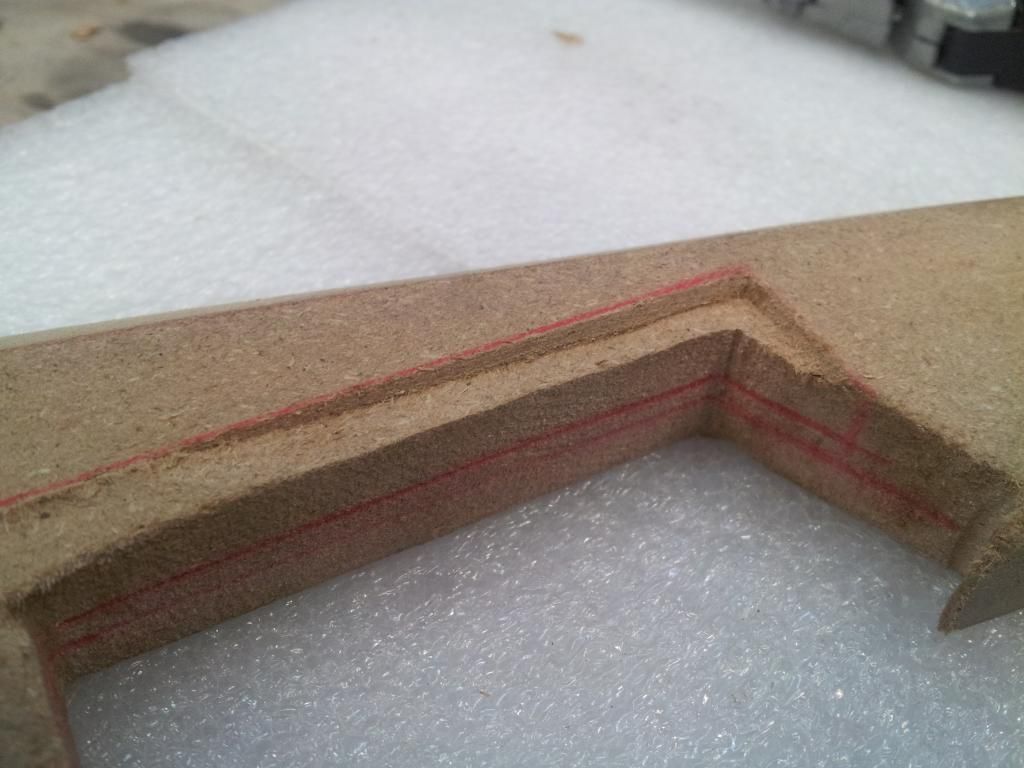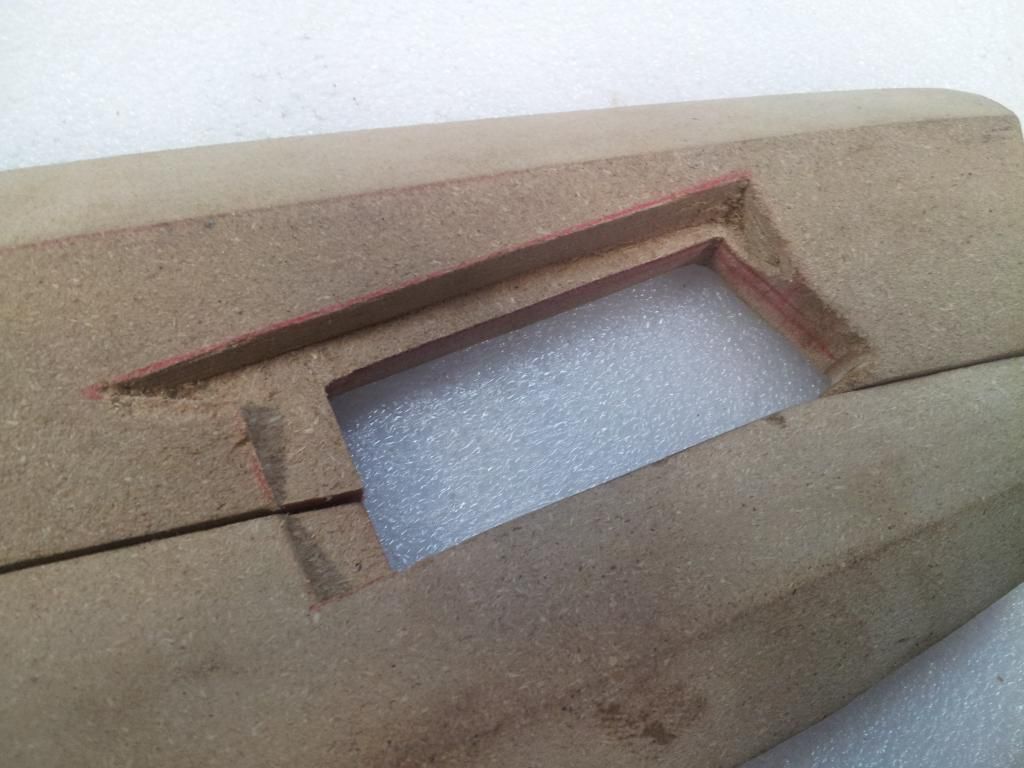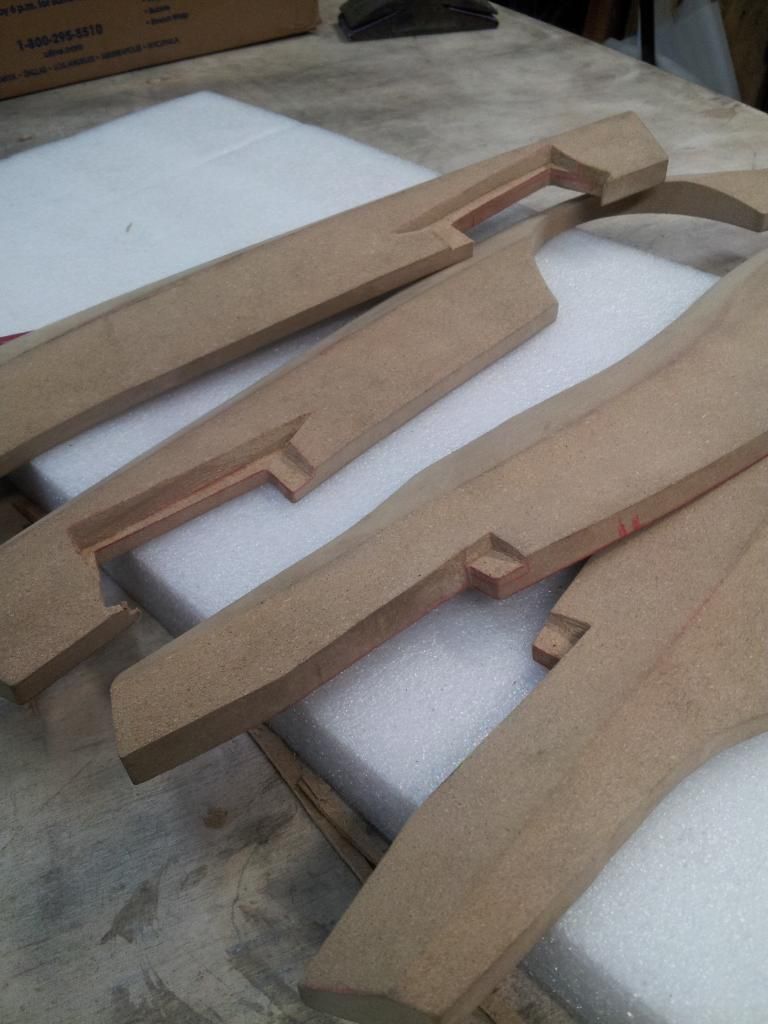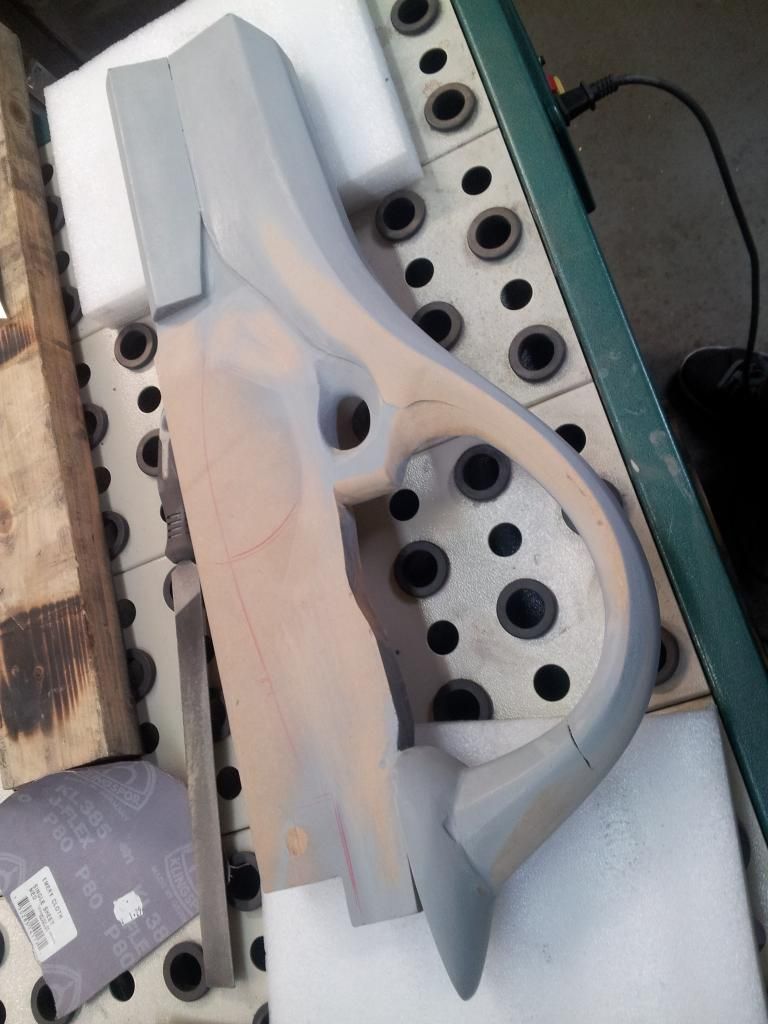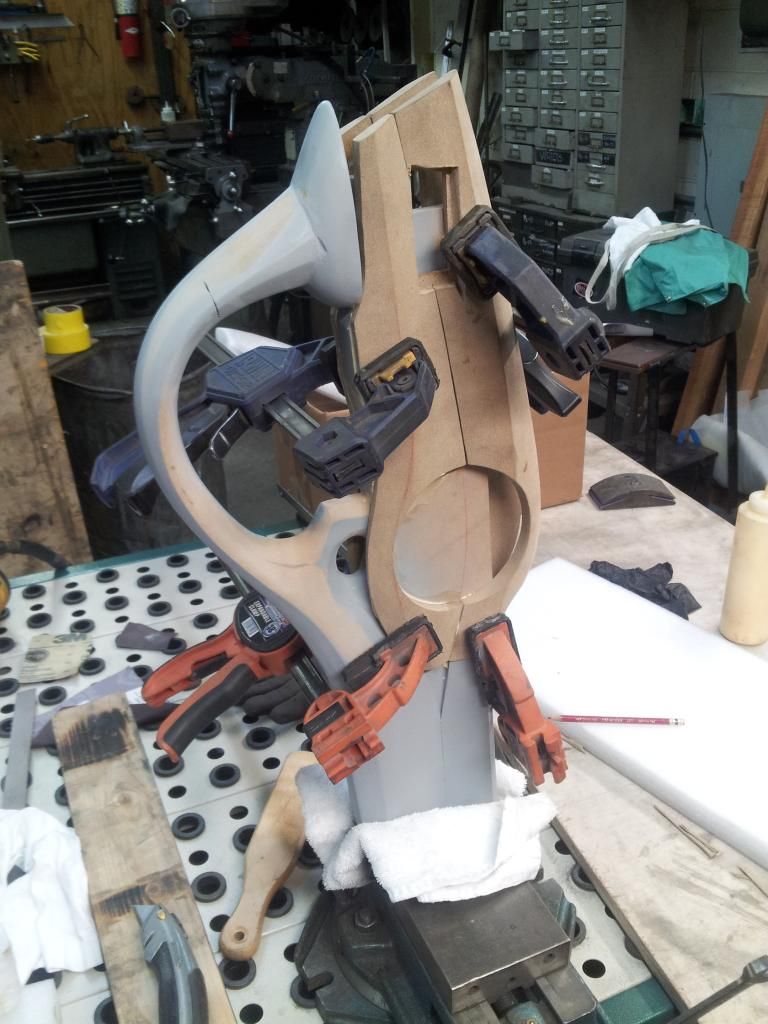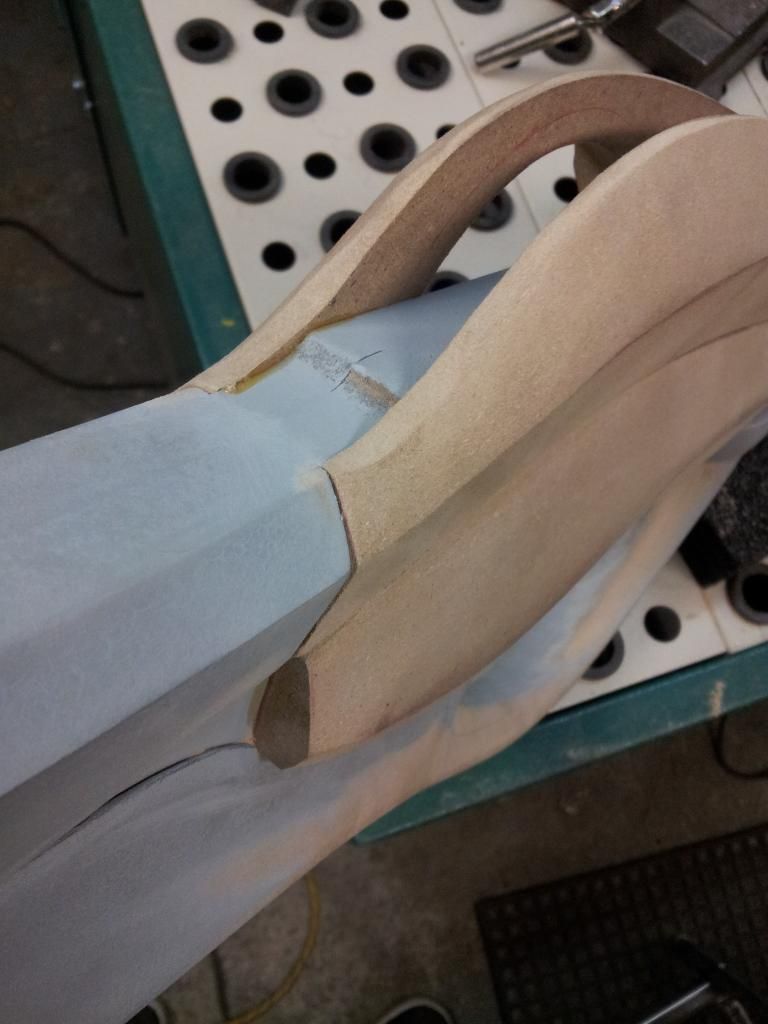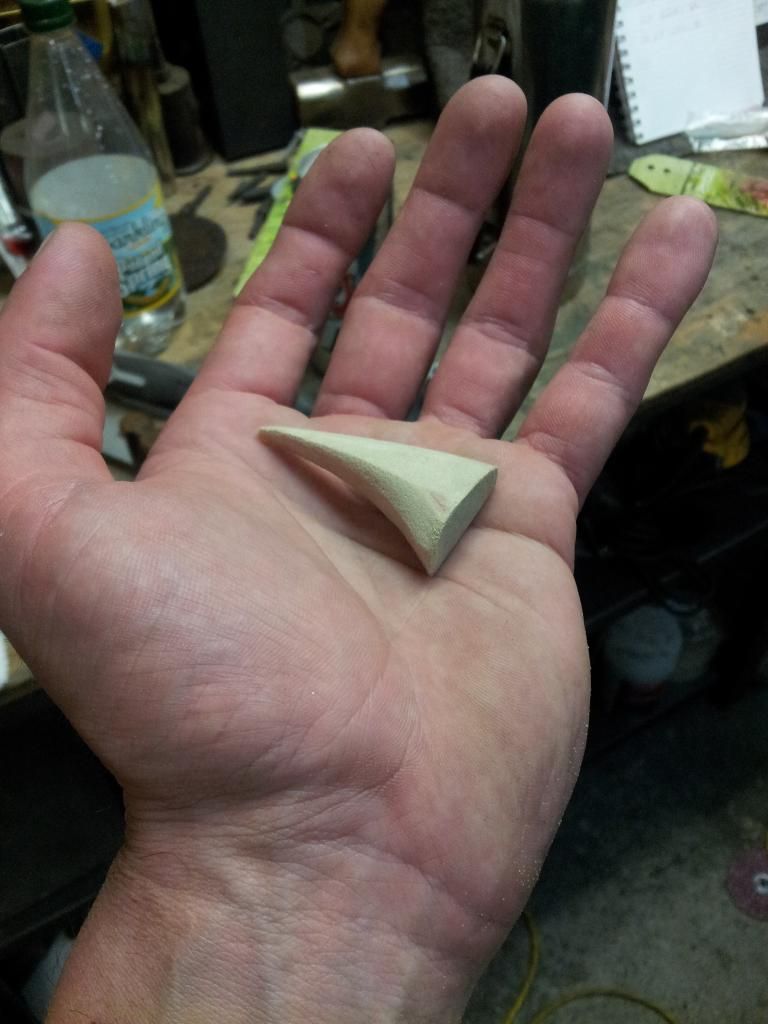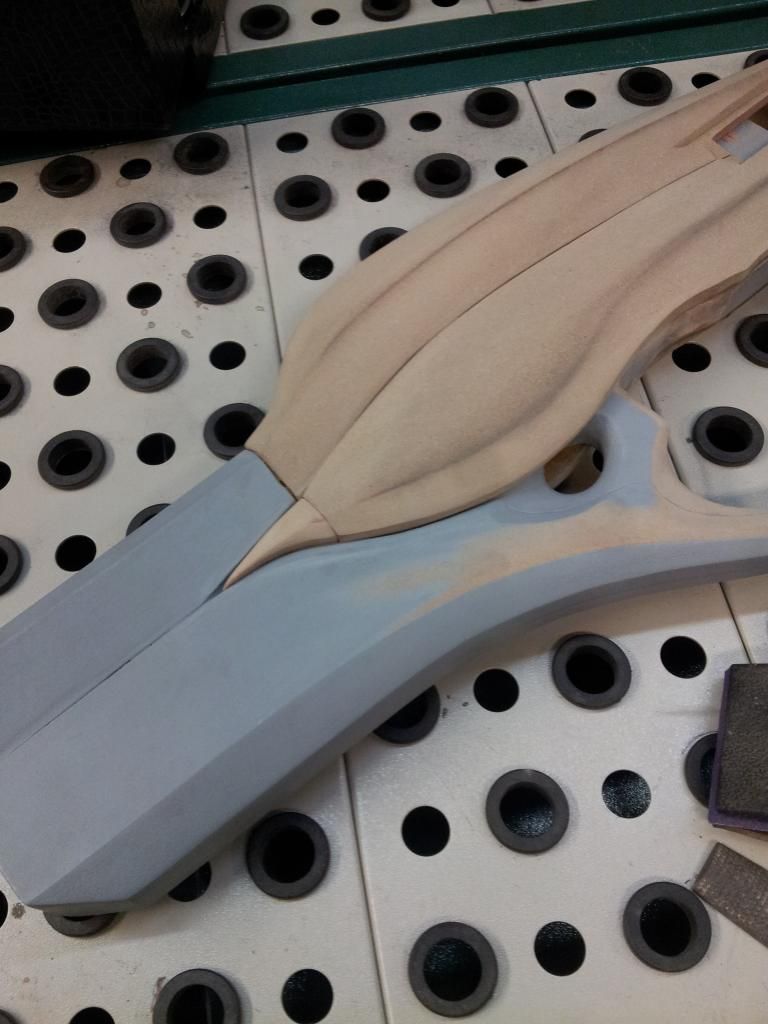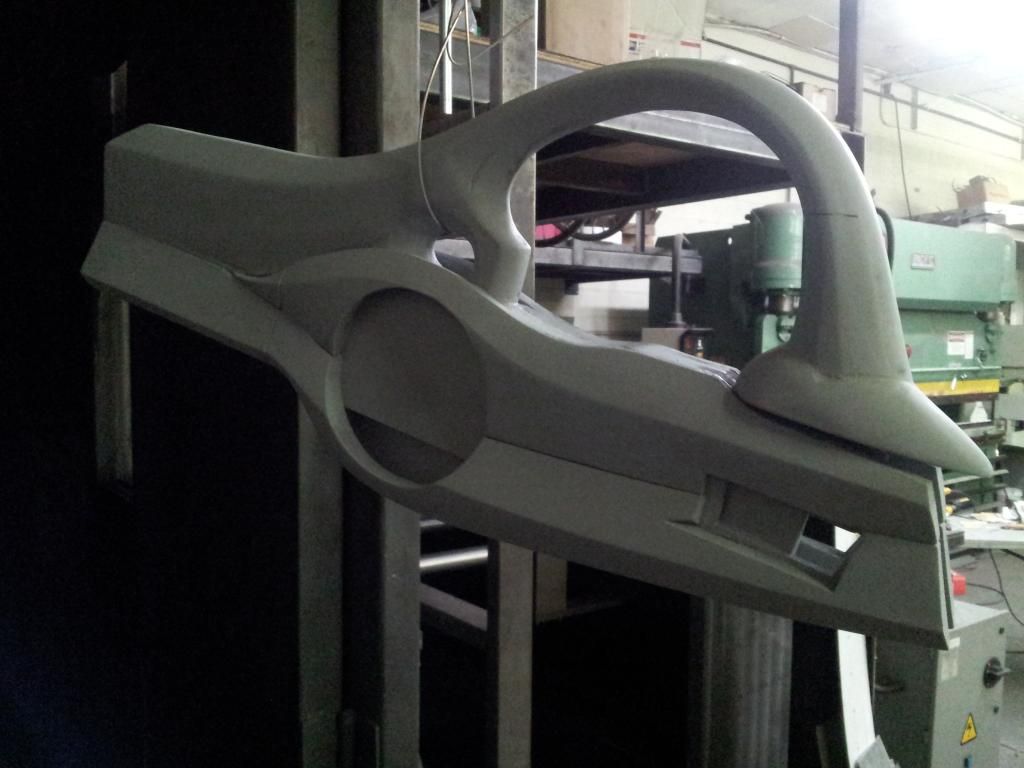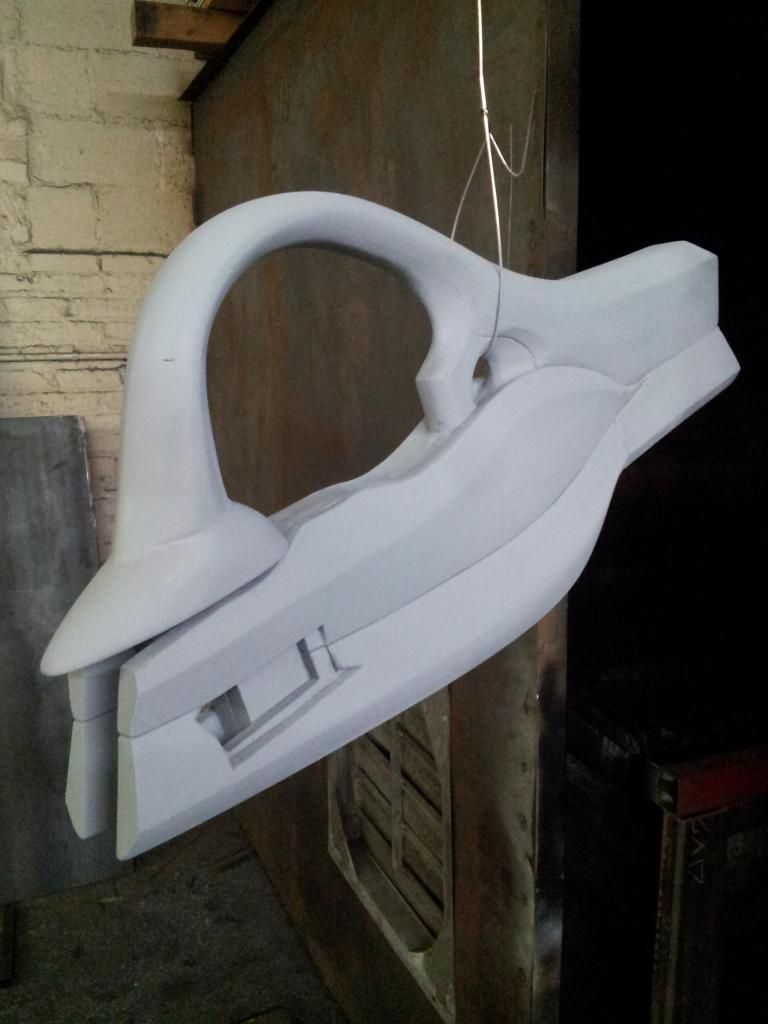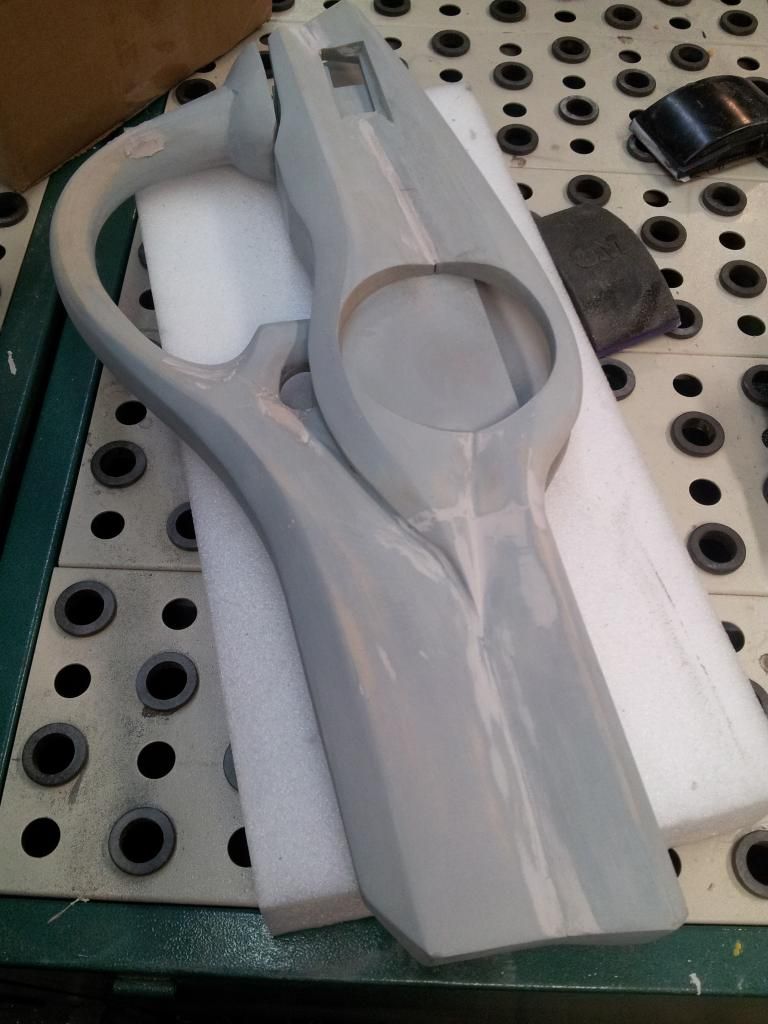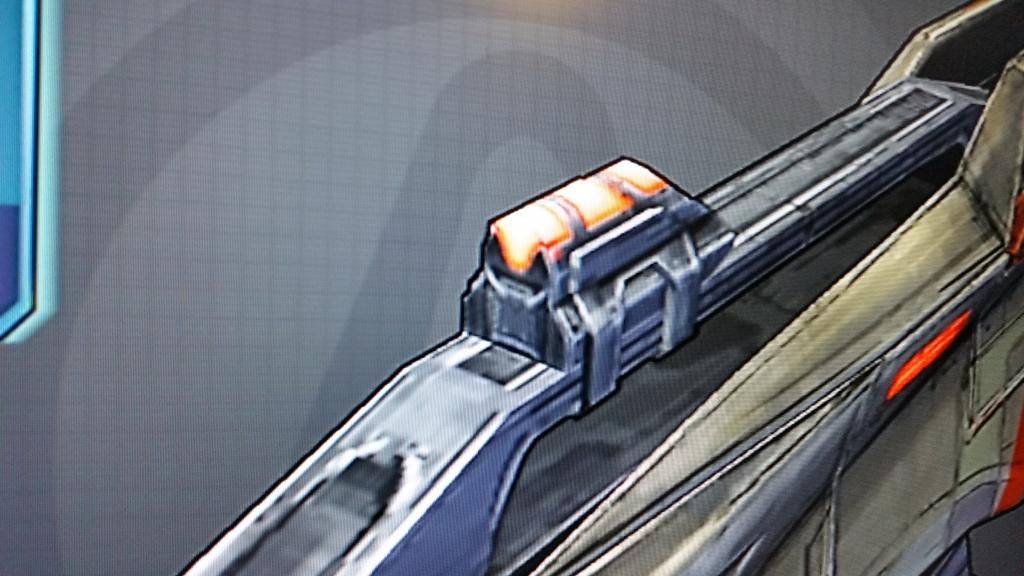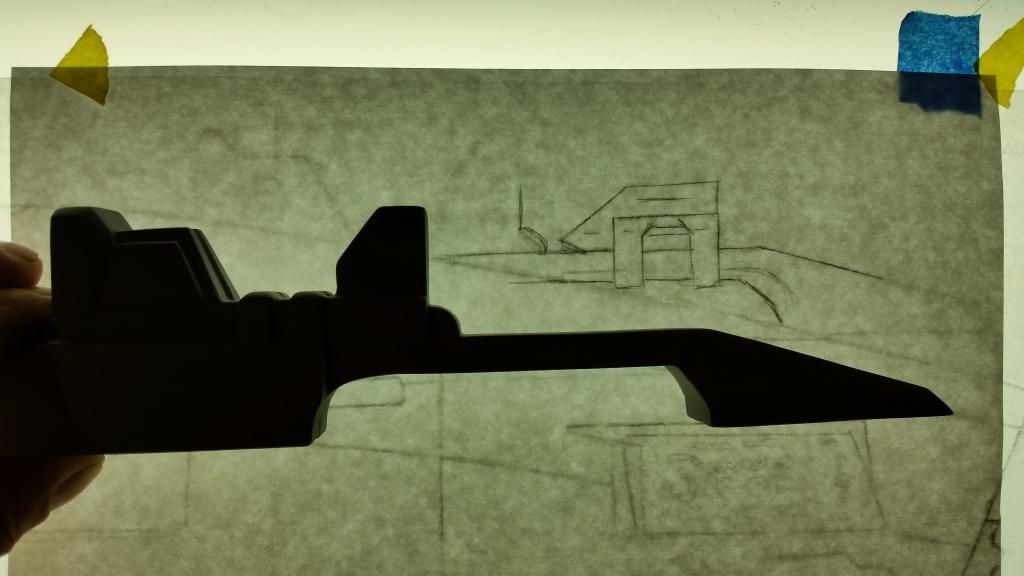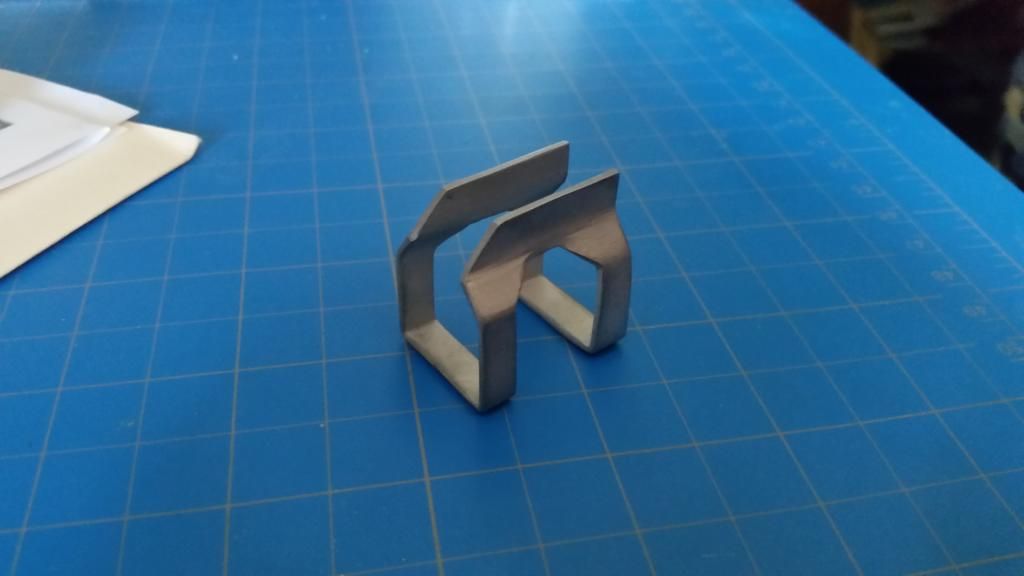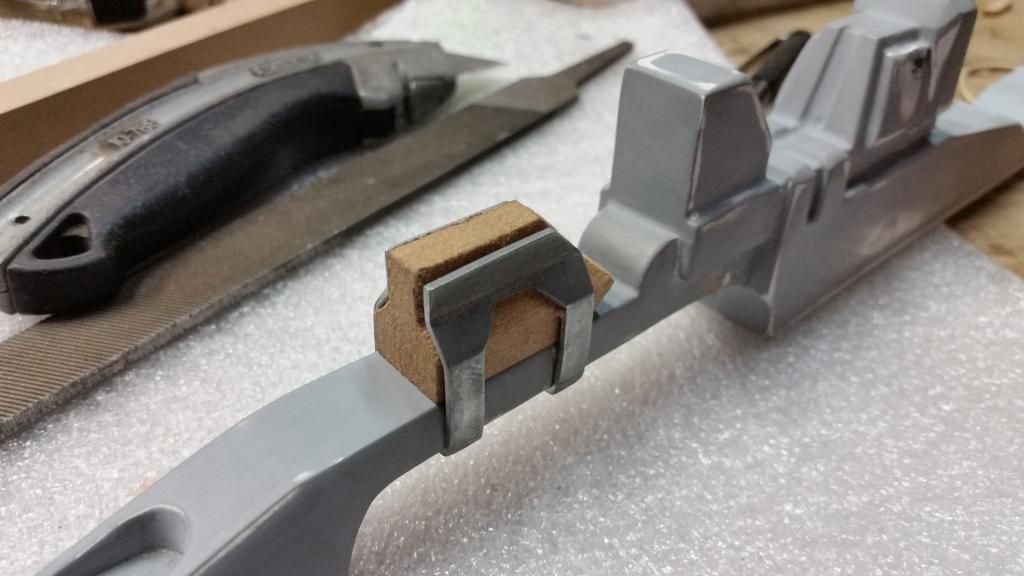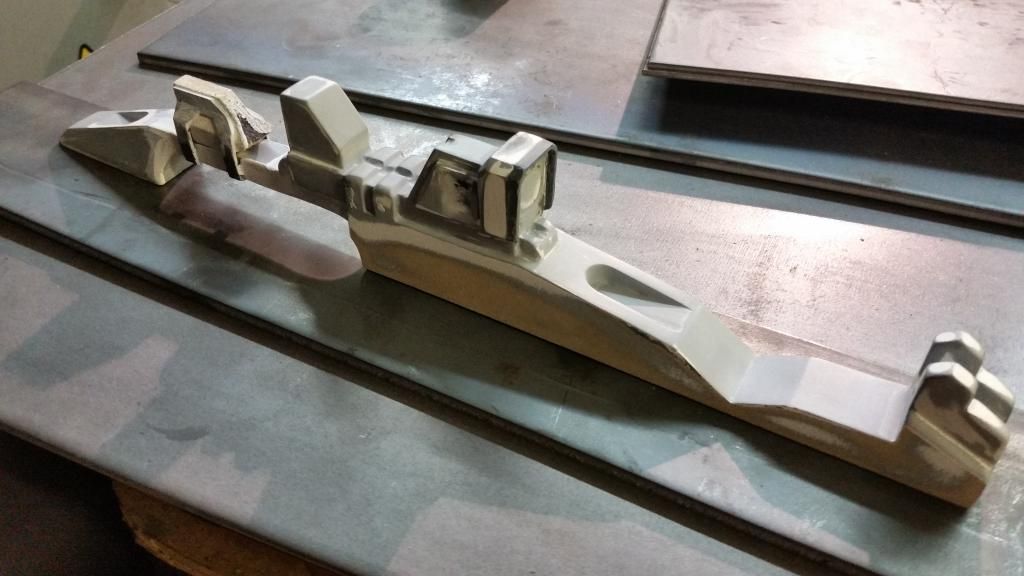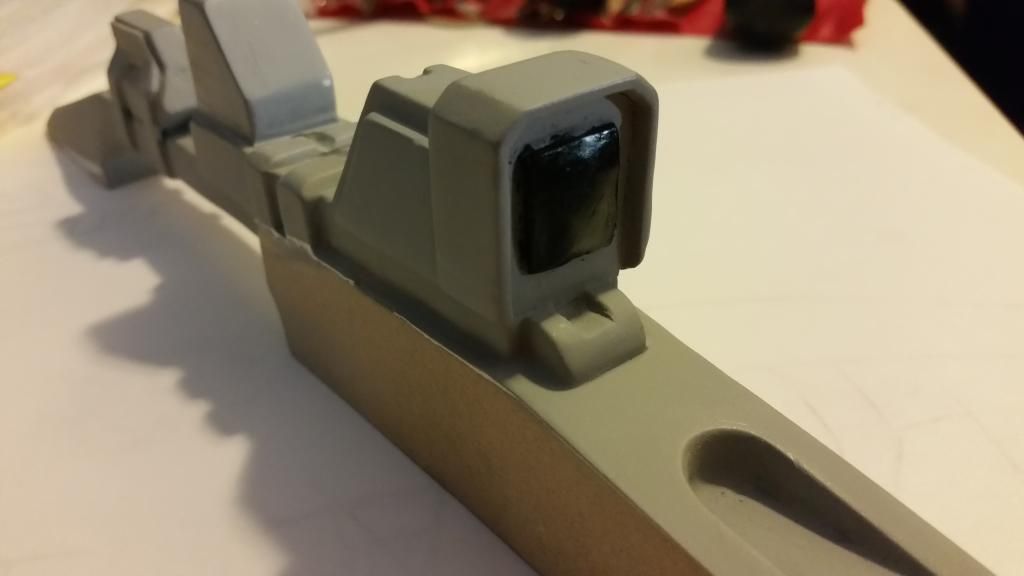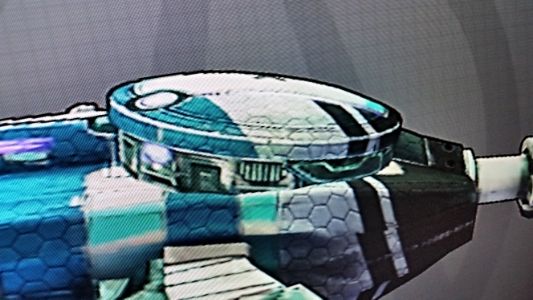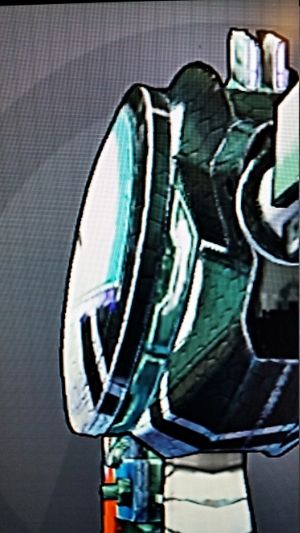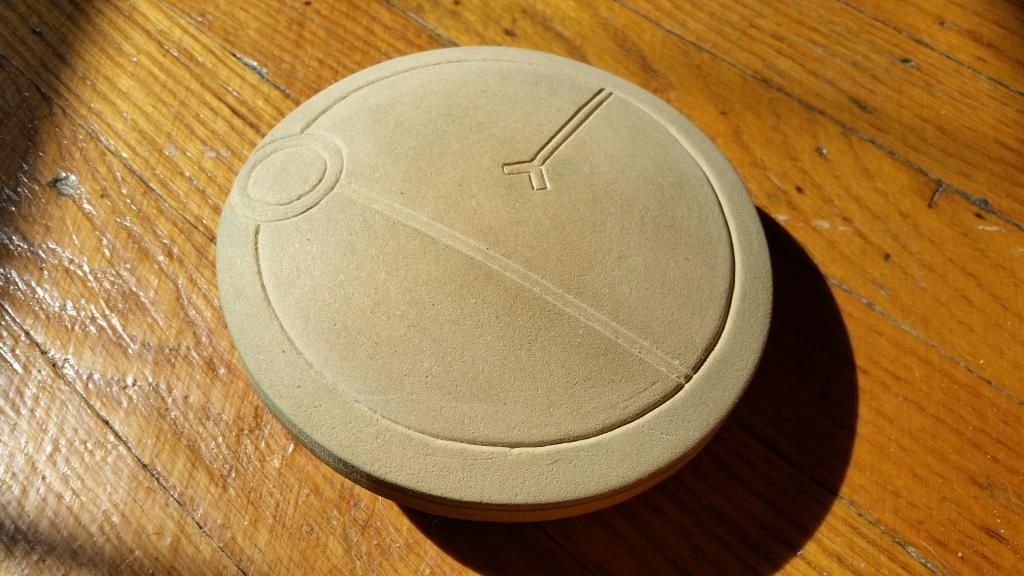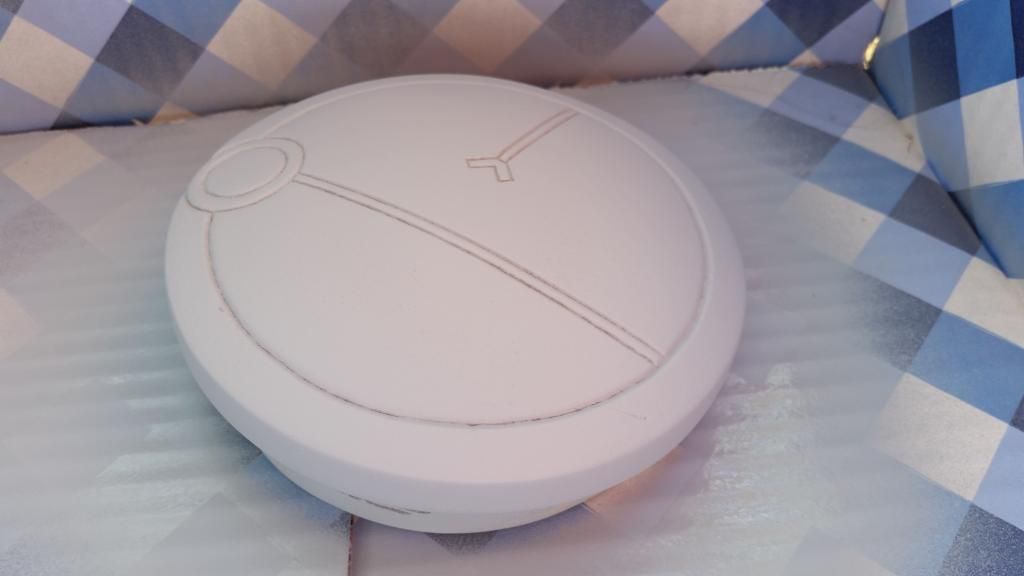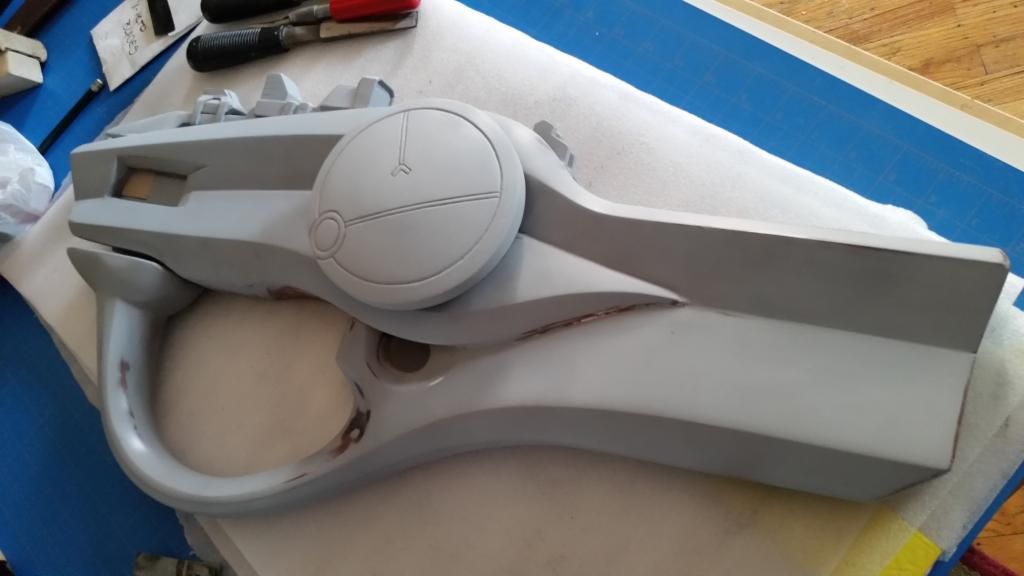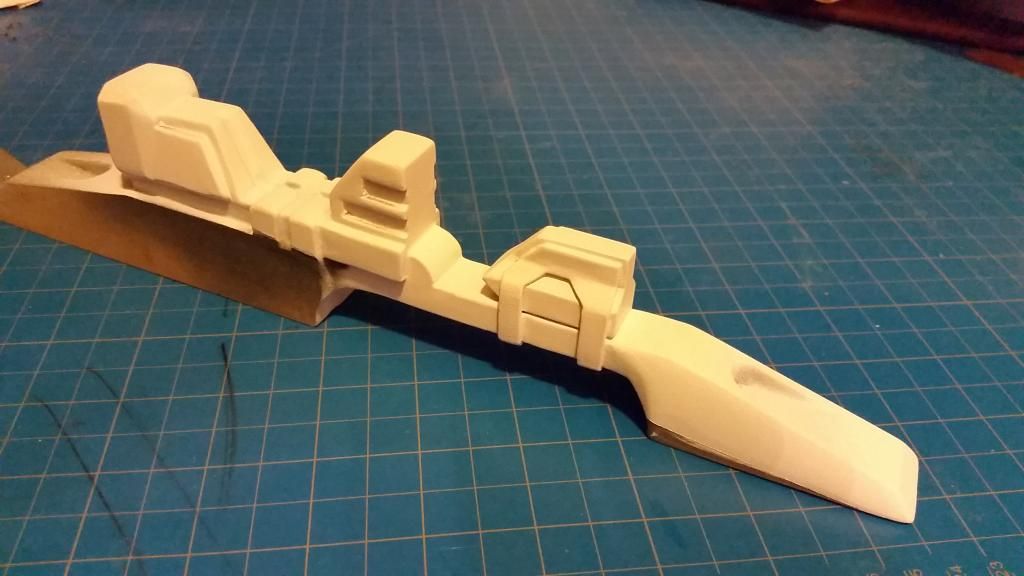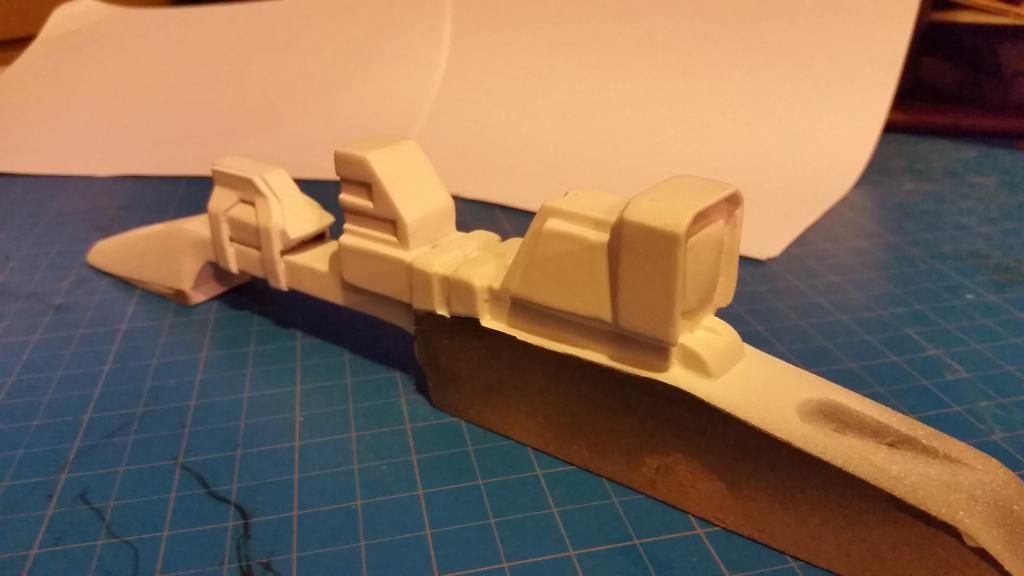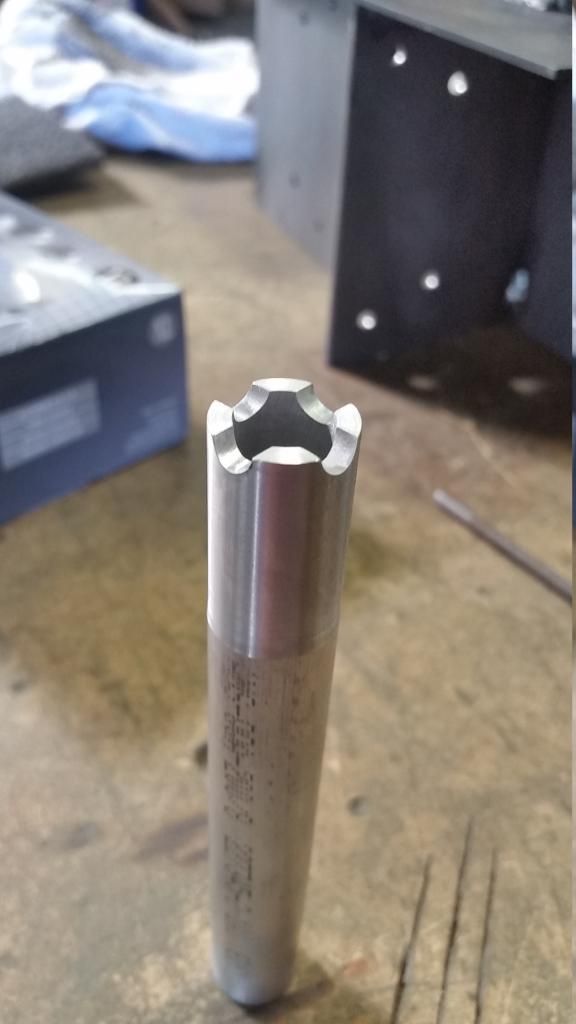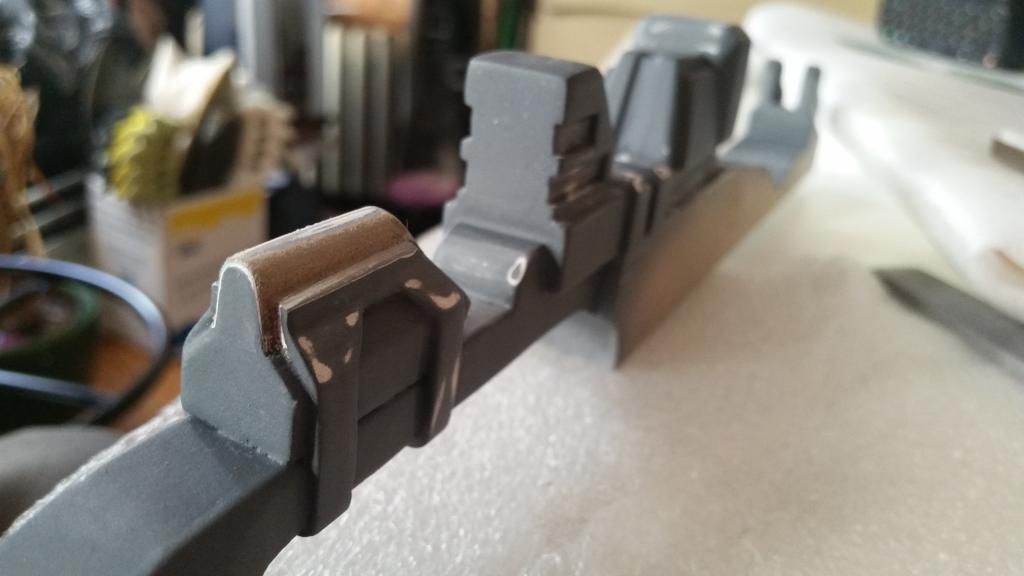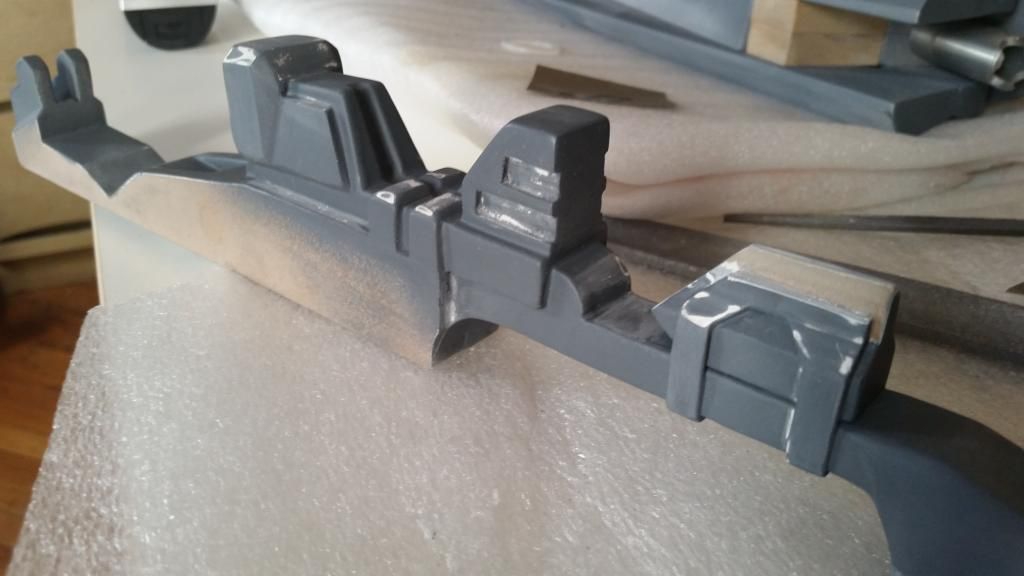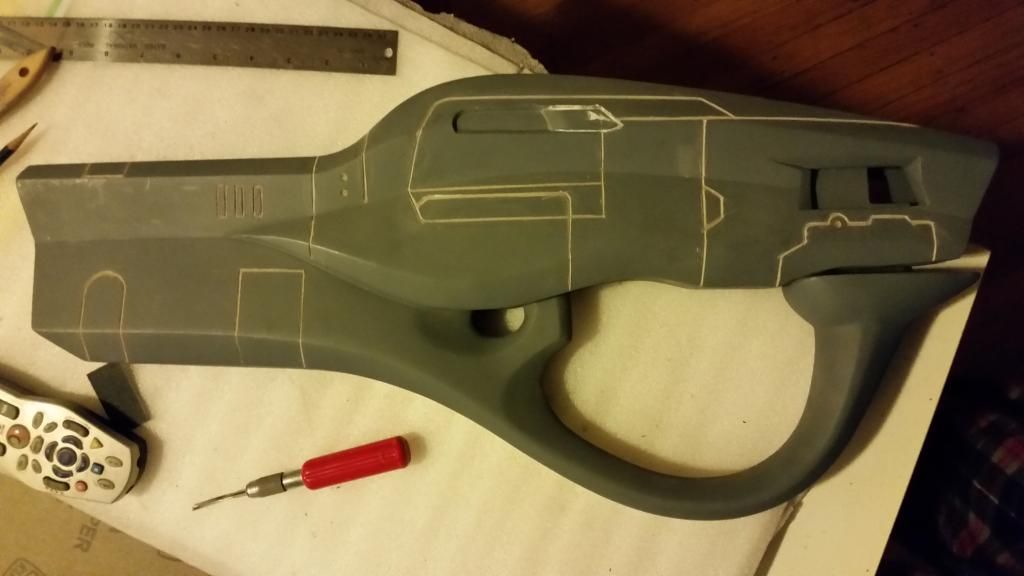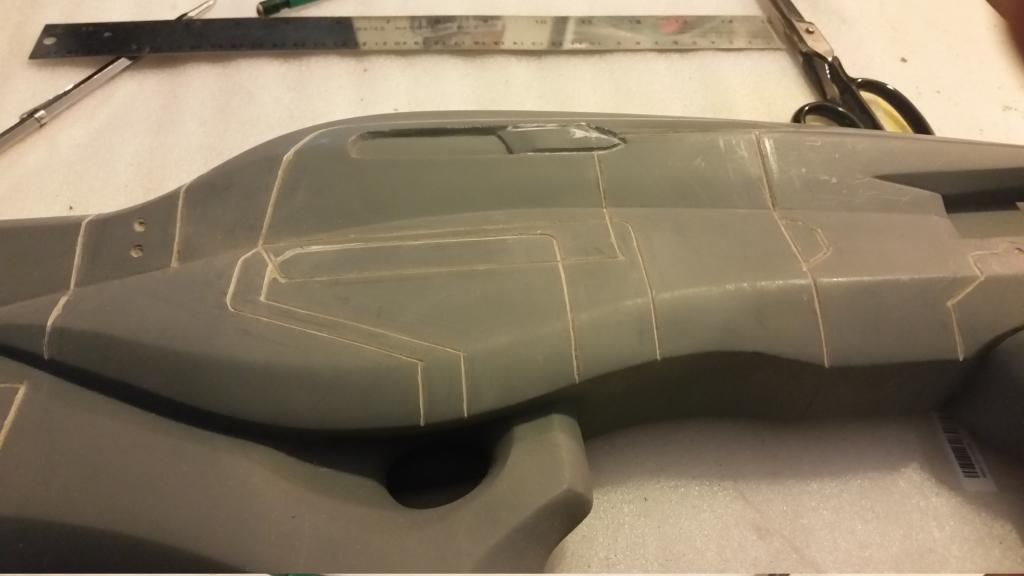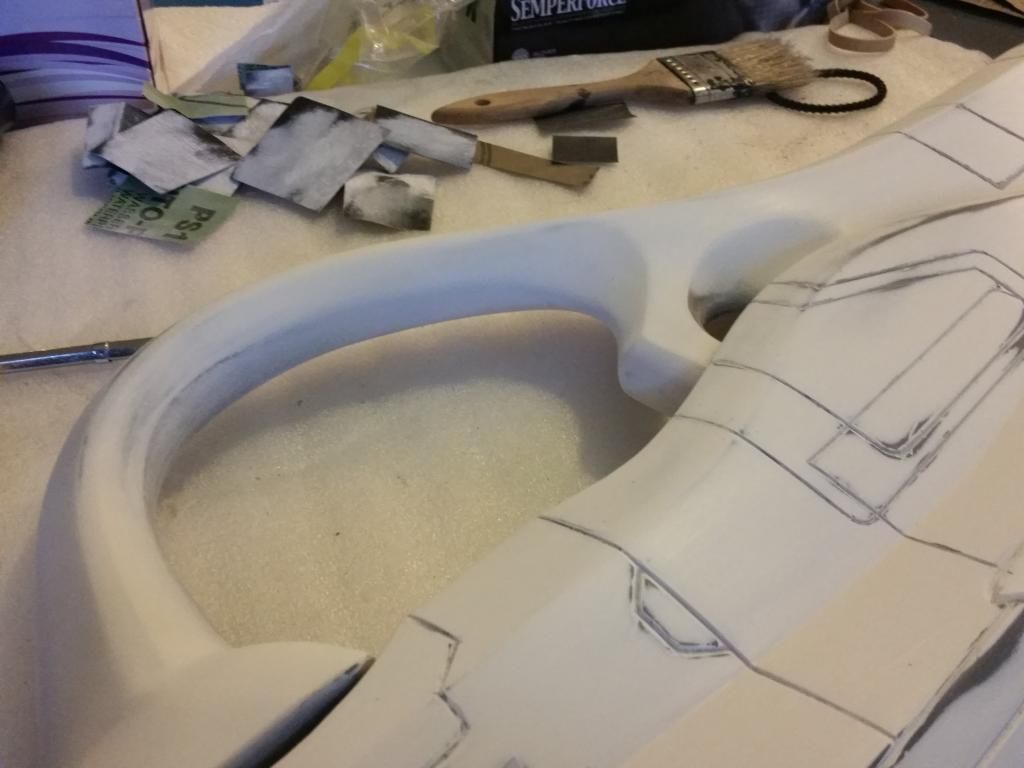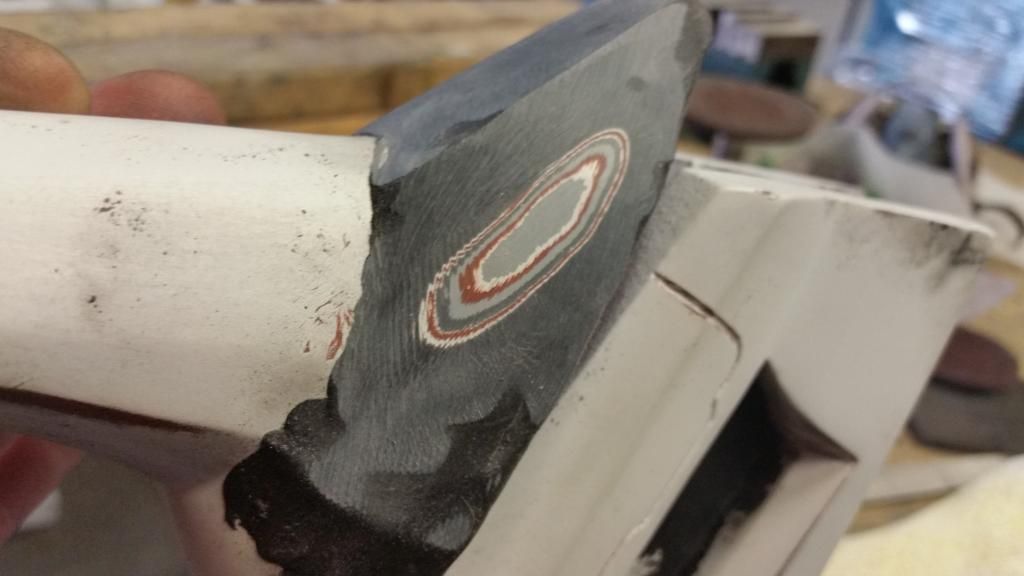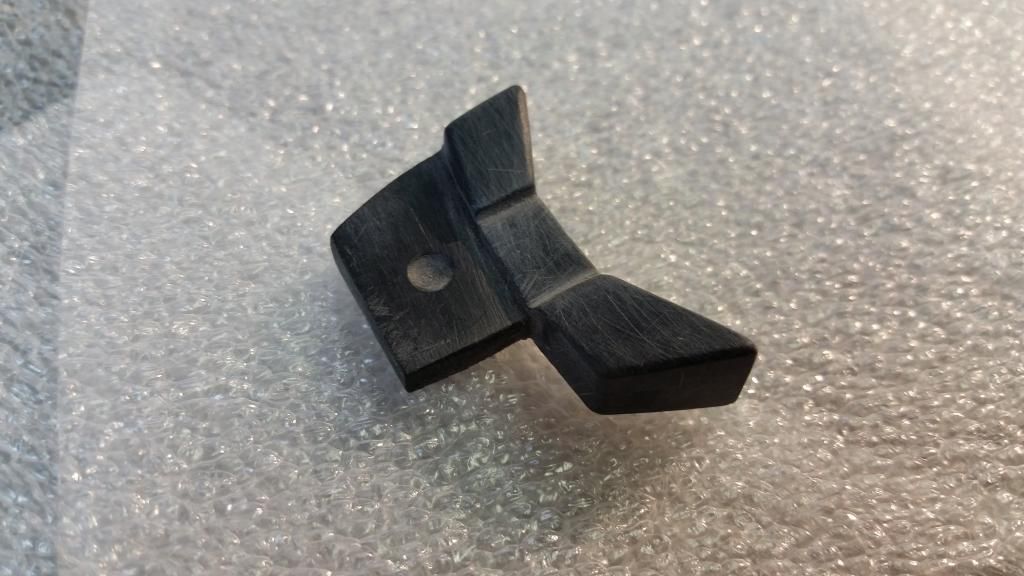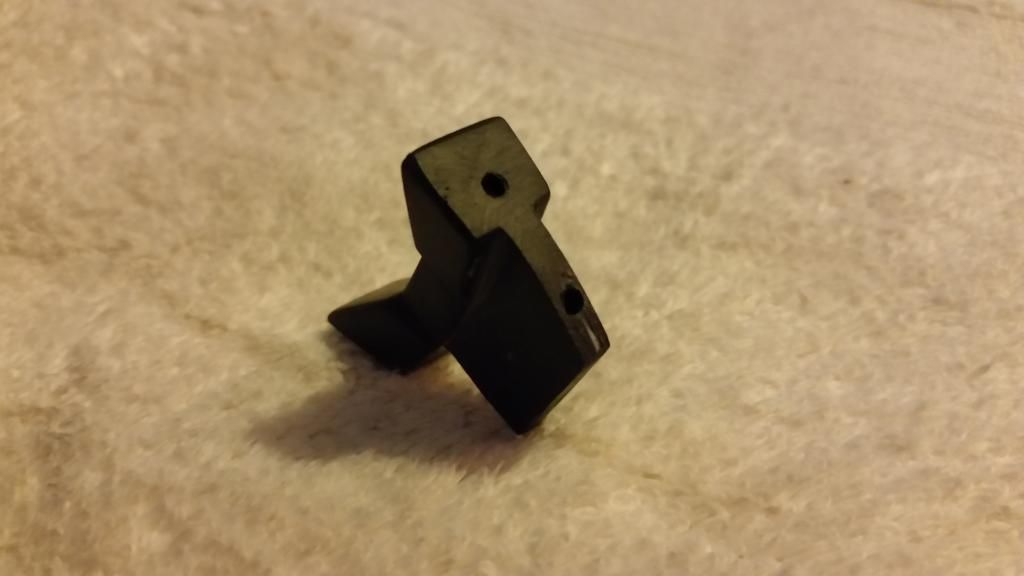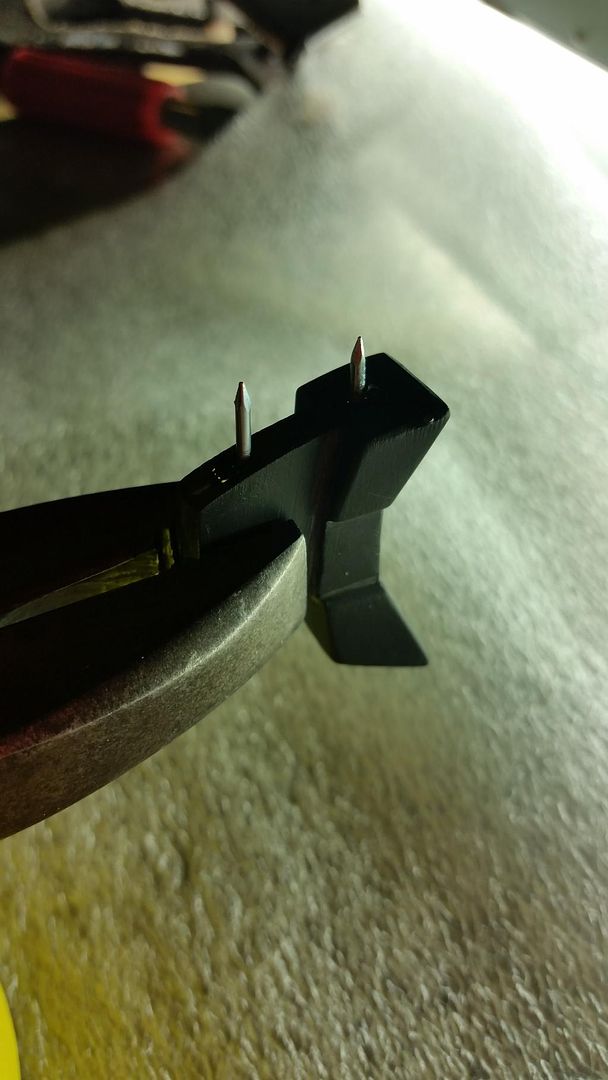"A-hem." *dusts off thread*
I had to go digging to find out where exactly I left off. And I found it.
So, I have been using Apoxie sculpt for my filling at home as there is no discernible sour odor, and subsequently no sour moods, around the house. It takes a bit longer than the Bondo to cure but the benefits outweigh. Reliable sanding tooth and texture that can be polished in a pinch. It can be carved and machined like normal plastics as well.
After the last filling and sanding session covered here, I slapped a nice coat of the light grey auto primer I have been using almost exclusively up to this point. This shows the blemishes in the finish, but it also does a bit to fill in the little pains in the neck. I needed to back-fill more to get the contours down. As my substrate is wood (MDF) the Apoxie Sculpt is the perfect choice for me. I have no idea what foam builders use. (I am honestly a bit intimidated by the medium. It would be like, "No mistakes, or else..." in my mind. But I digress.) Long story short I went "to town" with the filling, adding plenty to the grip and display panels.
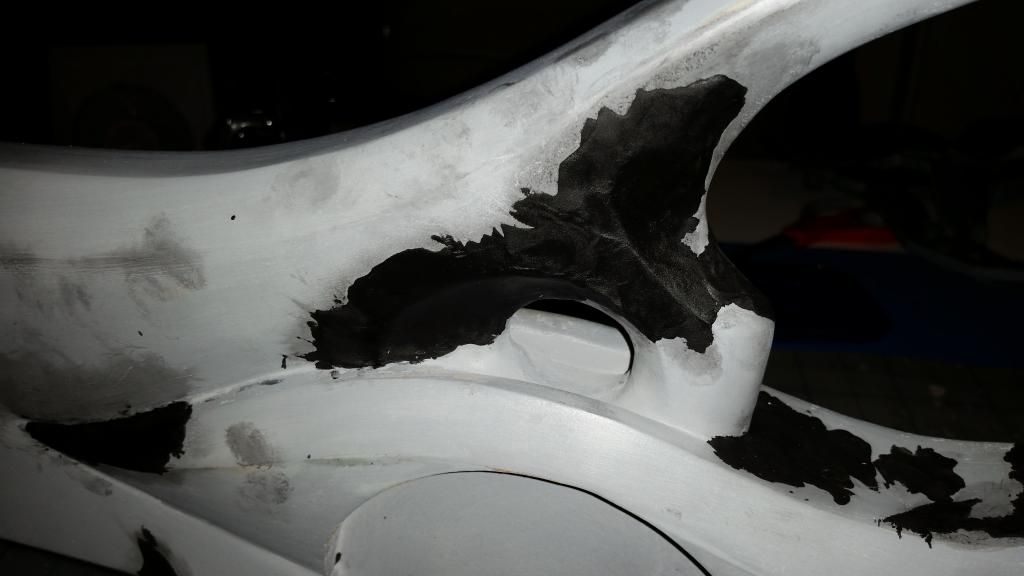
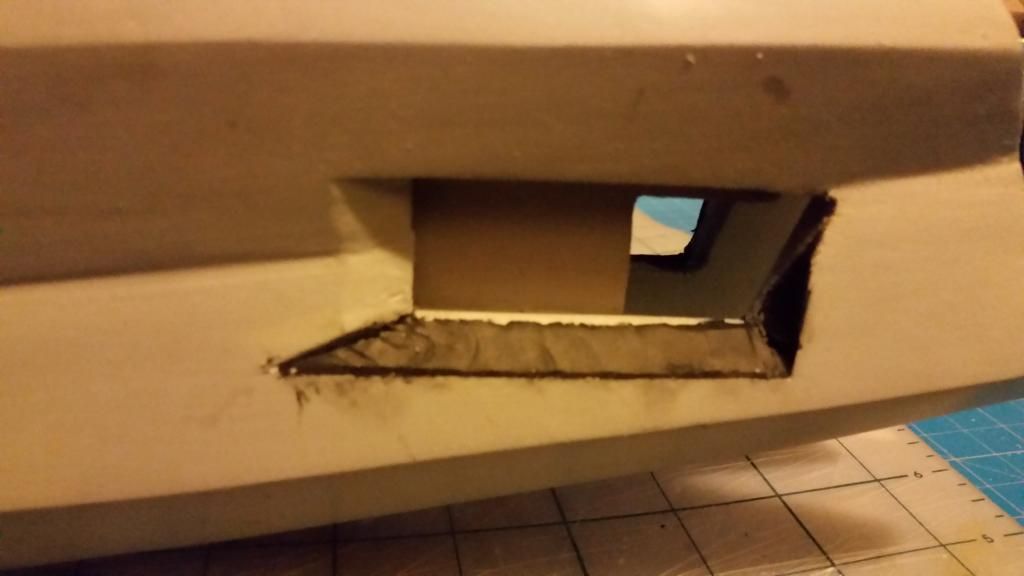
These were tuned in with a variety of files and various grits of emery cloth ending at 320 grit. I switched primer color after this round from grey to white. The difference in color lets me know when to stop focusing on an area I don't want to effect too much. So when the paint turns grey, stop. Unless you see that the previous work is insufficient and is in need of further shaping.

There was an additional coat of white primer in between photos. The primer has enough body to fill small gaps and with many, many, consecutive coats (sanding between) to fill greater anomalies.
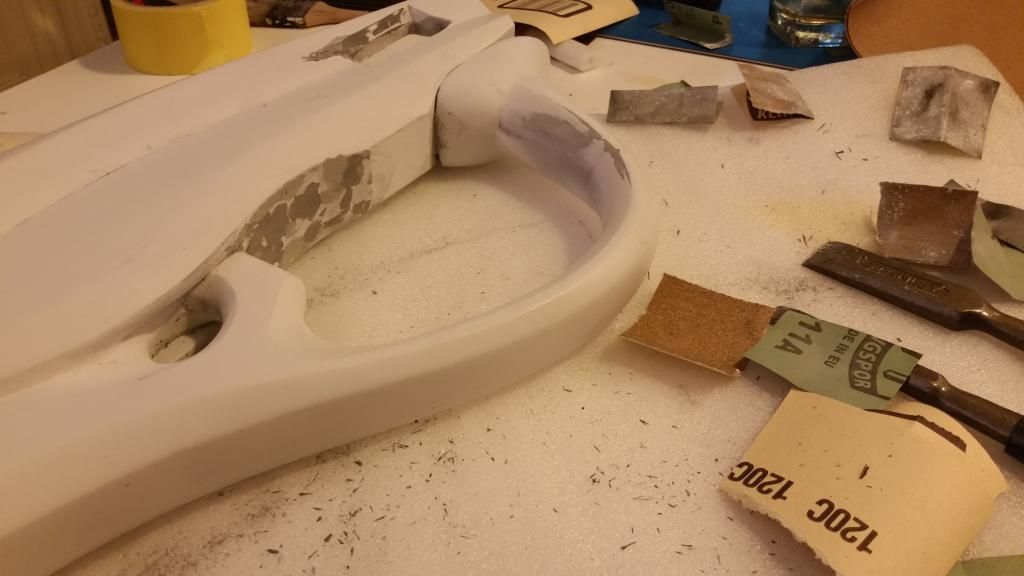
Up to this point I have used light body automotive primer. I had a limited selection at the store on two different occasions and acquired some different types/brands of primer. The first being a red oxide rusty metal primer (Rust-oleum) that looks amazing applied to the main component.
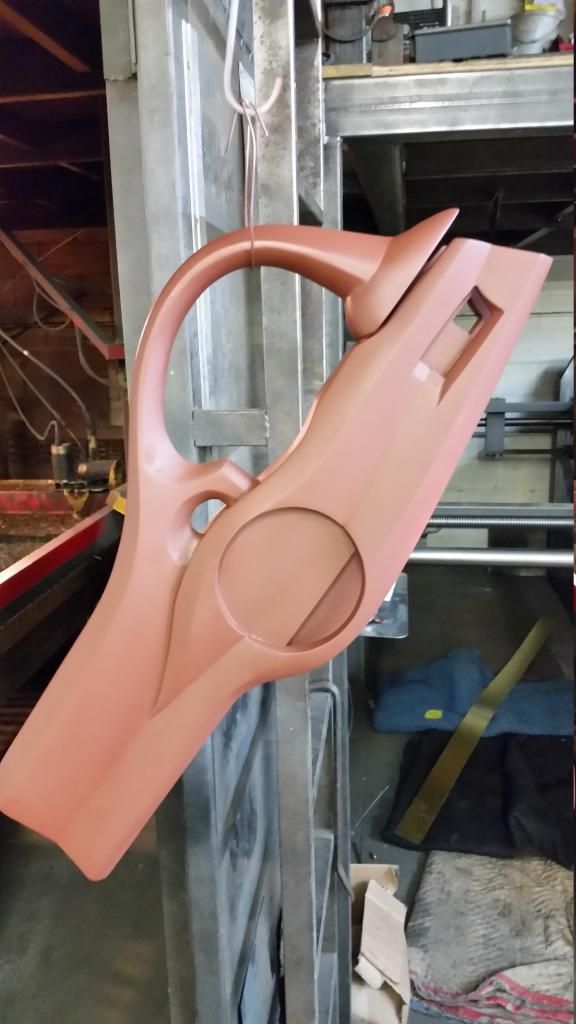
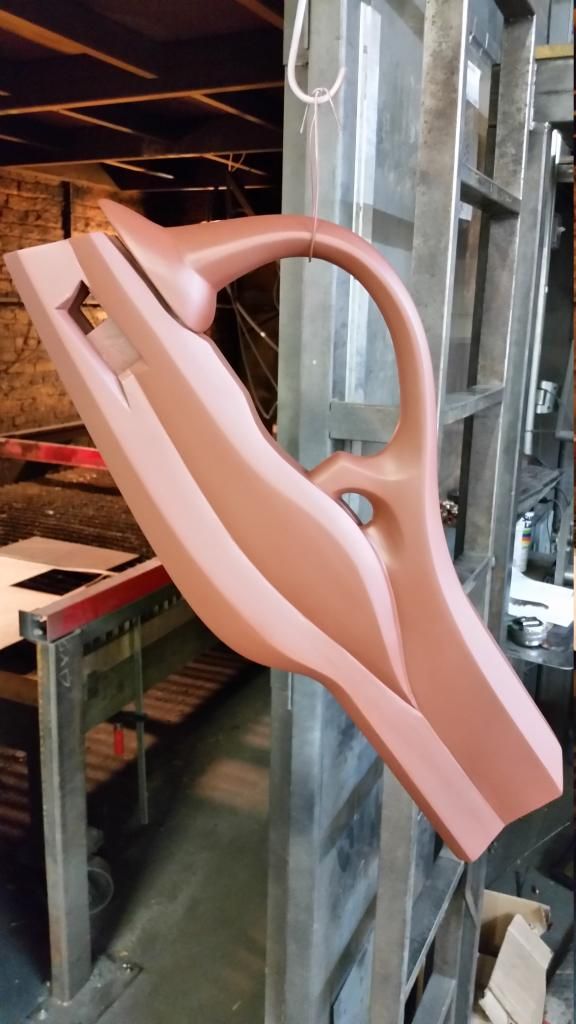
I was used to the quick drying time of the auto primer even though left for 4 hrs the paint was still tacky for a full 24 hrs. Initially I was dismayed. I tried to approach this primer coat the same as I had in the past and it was coming off in little rolls. How was I going to work with this gummy thick paint? By chilling out and letting it to its job. After the paint cured it sanded beautifully and held up its end of the bargain. I applied an additional heavy coat and let it cure fully before sanding to most benefit filling low areas and inconsistencies.
I joked that this looks carved out of Monster Clay:
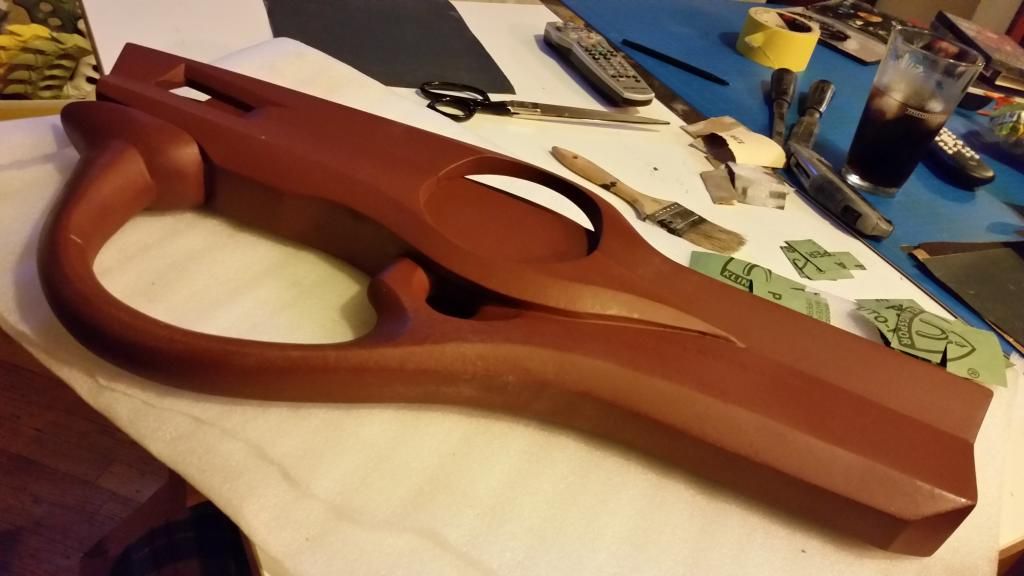
Sanded to a smooth surface and extra tuning of the sharp edges leaves the main body with a cell-shaded look.
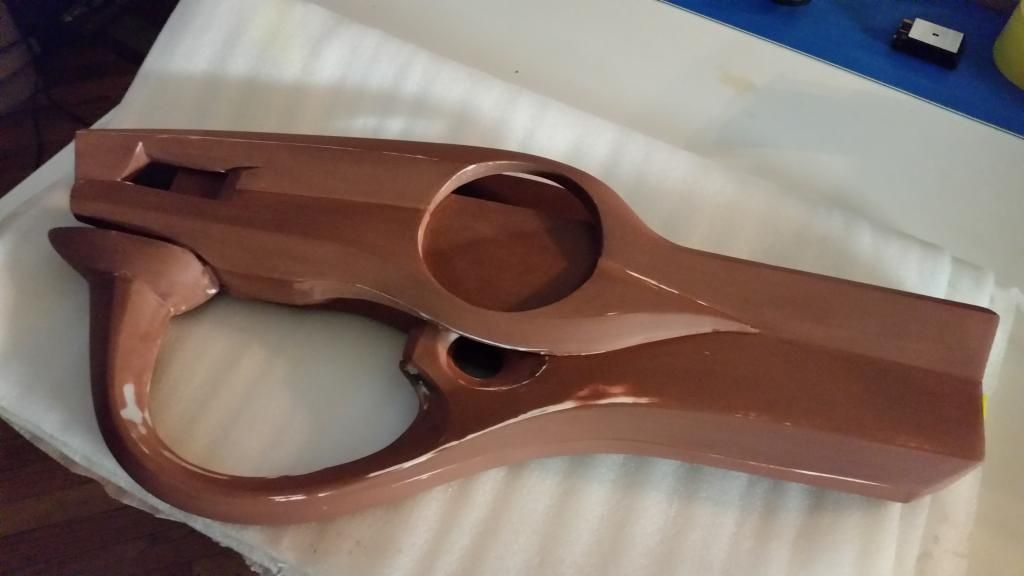
With the main body coming together I decided to get back to work on the sight component. Retrieving my prior drawings and template work I did a layout on 1/2" MDF and rough cut the shapes with my trusty Jig Saw. I would usually prefer to cut the shapes closer to true with my small bandsaw but I burnt the blade working through last years Kreig axe build and Freddy's Nightmare Glove. (Which I absolutely love.) The Jig works in a pinch but leaves much to be desired for accuracy in tight spaces. Desperation and haste are the parents of shoddy decision making, and we all lay in the bed we make.
So, heck, so what if they aren't that close to the template? I can make it work. I can do anything. We all can, if we want to.
Here the two halves are glued with Tightbond 3 and a couple clamps.
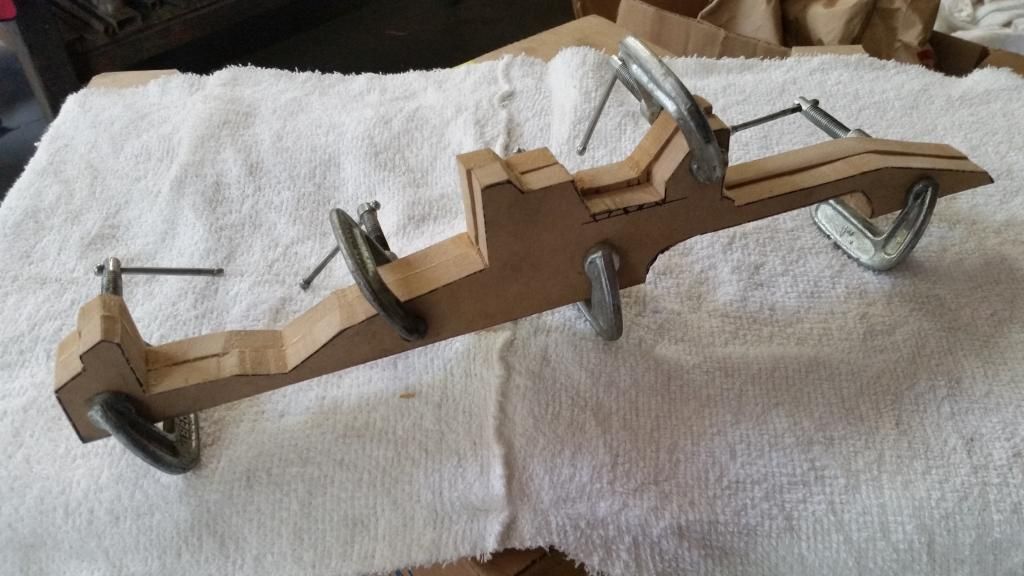
Needless to say: files/sand = BOOM, Breakfast. Here is a shot of the trimmed assembly dry-fit in the body.
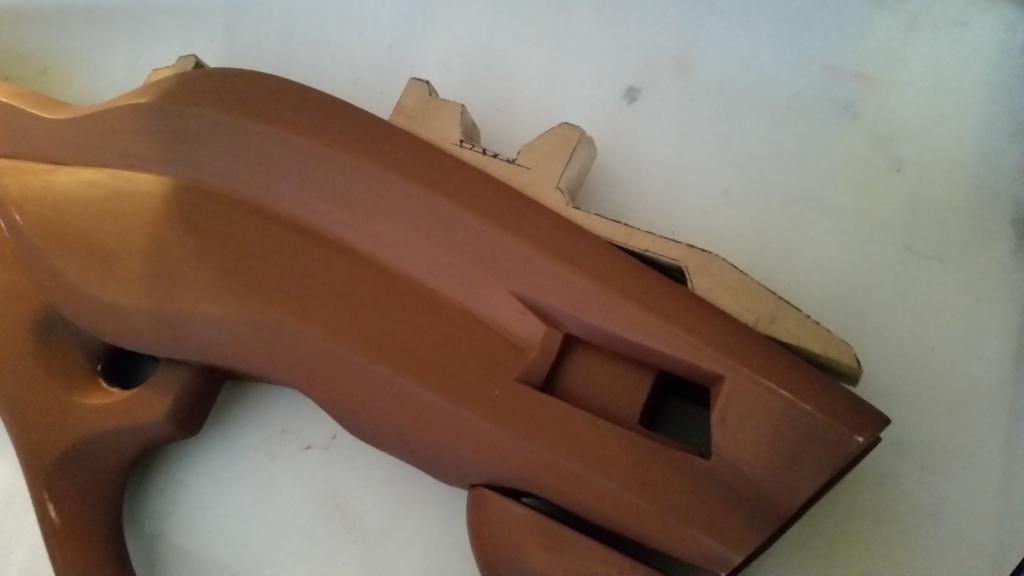
I pulled up my in game models and layed out the cut pattern for the start of the detail work on the sight. I will employ the same techniques I have discussed earlier this thread.
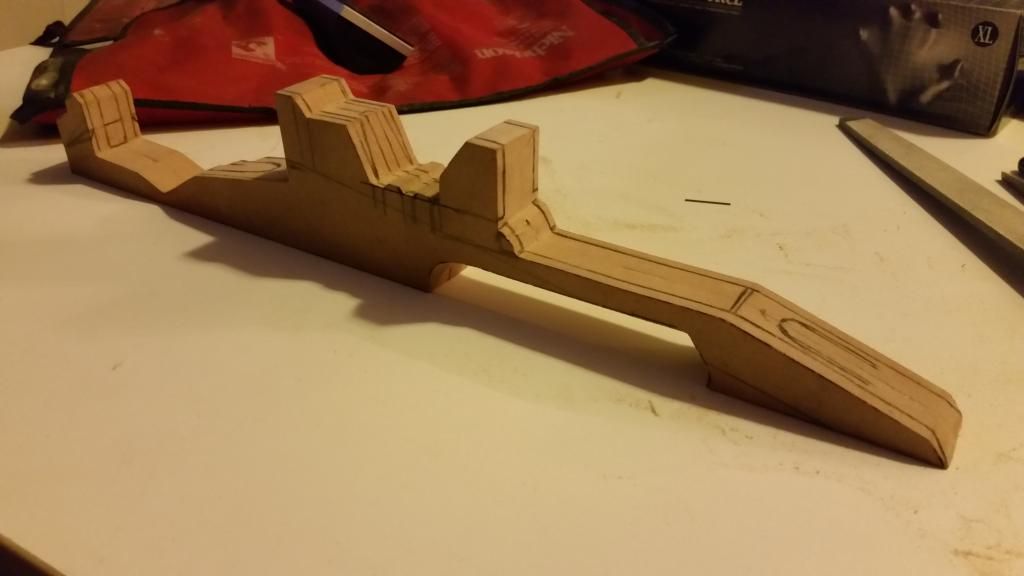

ALA-KAZAM!

Here are a couple of dry fit photos:

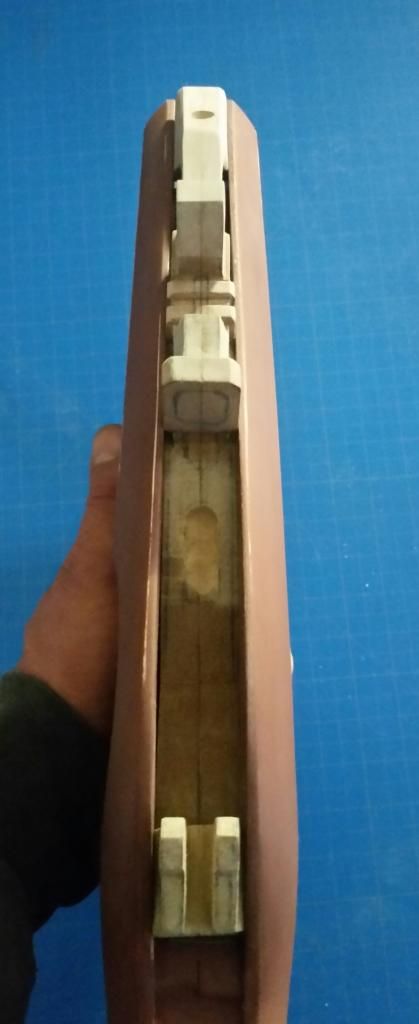
I did the inside detail work with a 3/16" ball end mill in a Dremel. The whole shape got a comprehensive sanding and a "heavy" coat of light body primer to start the process.
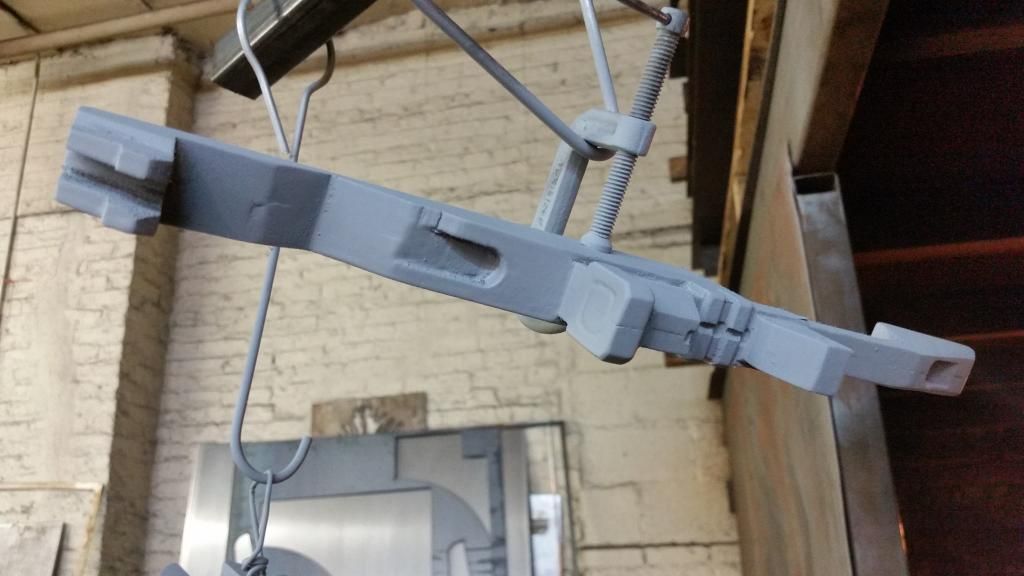
Some aspects of the design escaped my initial cut and shape so I employed my trusty Apoxie Sculpt.

Initial fill and fix, filed and sanded down. Plenty raw at this point.

I assure you that there were many layers of primer after the fact. Zinsser 1-2-3 to be exact. This primer is an amazing tool. Boasts 1 pass coverage and could deliver. My particular use was quite complex and required extra dexterity however. The filling quotient of this particular product excels over the red oxide but feels a bit like plastic after fine sanding.
After many coats and sanding I arrived at a product that I would call 85% complete. It's all in the details.
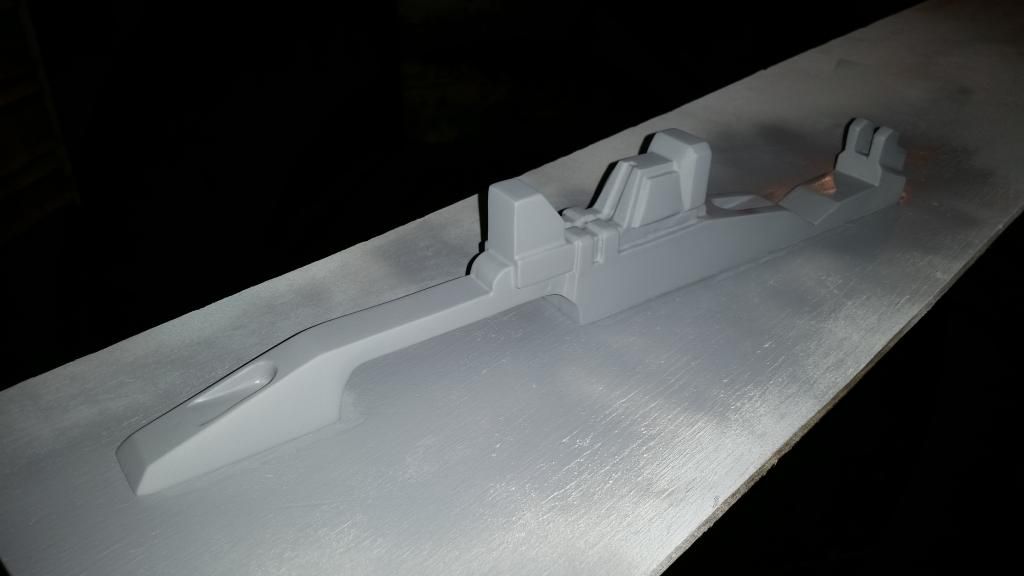
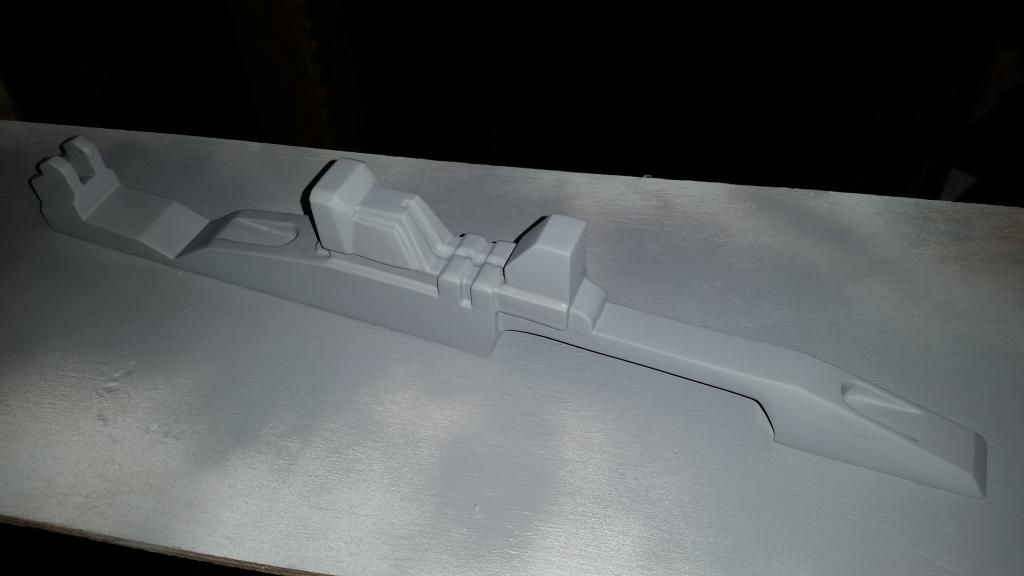
This project is gaining momentum...

